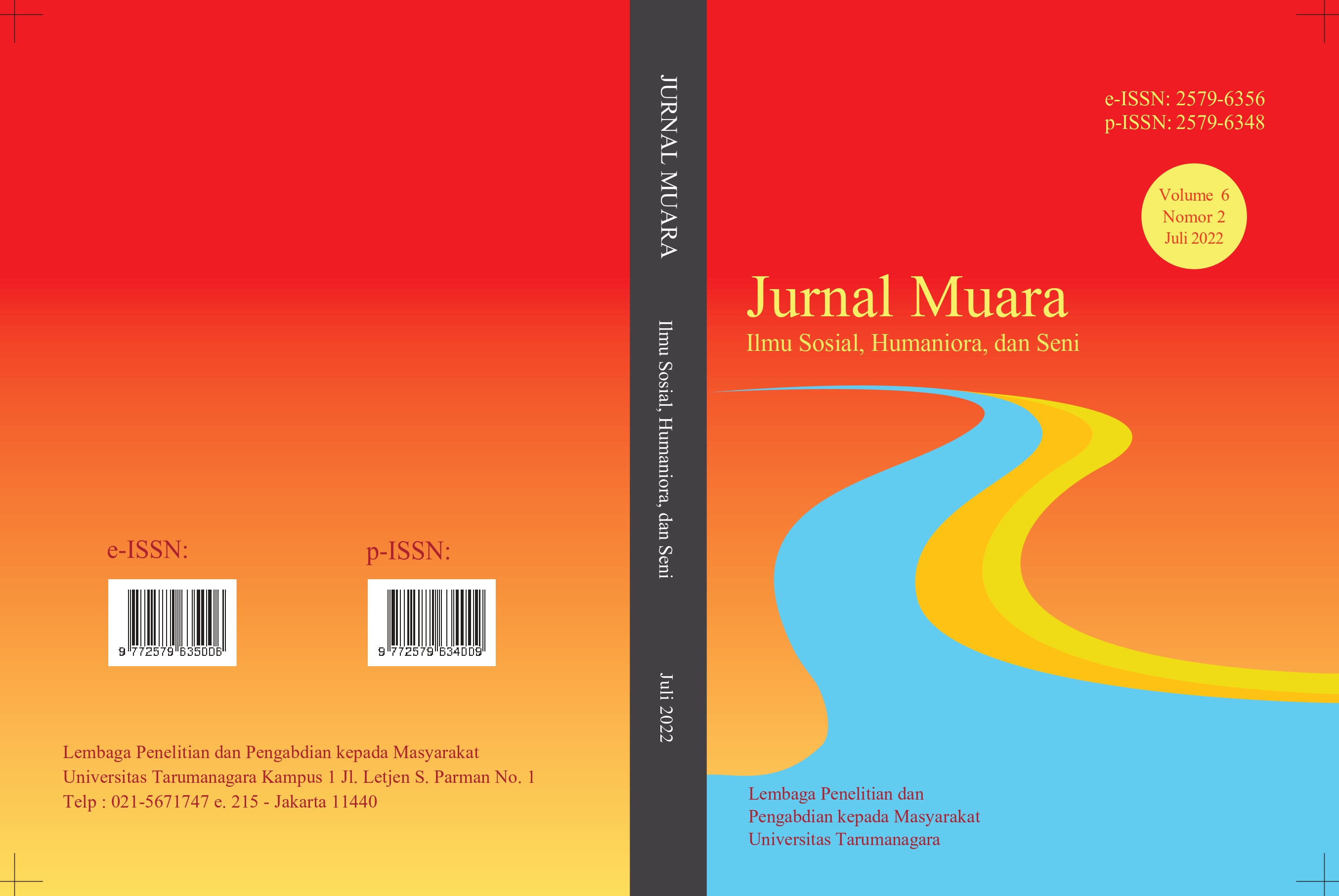PENGARUH ADULT ATTACHMENT STYLE TERHADAP KEPUASAN PERNIKAHAN PADA DEWASA AWAL
Main Article Content
Abstract
Relationships with other people are one of the most important things in one’s life. Young adults who are in the phase of forming intimate relationships with others tend to develop romantic relationships and get married. In marriage, marital satisfaction can affect one's life both positively and negatively. Therefore, this study wanted to find what factors could affect marital satisfaction. This study aims to determine whether there is an effect of adult attachment style on marital satisfaction in early adulthood. This study aims to discover the effect of young adults’ adult attachment style on marital satisfaction. This study was conducted on 161 married young adults with children in the age range of 20-40 years old. Moreover, this research is quantitative research by giving a questionnaire that was shared online. The instruments used for this research are Experiences in Close Relationships-Revised (ECR-R) and ENRICH Marital Satisfaction Scale (EMS). The results of this research indicate that anxiety attachment and avoidance attachment have negative impacts on internet addiction (F=83.489, t = -2.630 for anxiety attachment and t= -10.139 for avoidance attachment, p < 0.05). The effect of anxiety attachment and avoidance attachment on marital satisfaction is 51.4%. This effect indicated that individuals with high anxiety attachment or avoidance attachment had a lower level of marital satisfaction.
Article Details

This work is licensed under a Creative Commons Attribution-NonCommercial-ShareAlike 4.0 International License.
This work is licensed under a Jurnal Muara Ilmu Sosial, Humaniora, dan Seni Creative Commons Attribution-ShareAlike 4.0 International License.References
Agusdwitanti, H., Tambunan, S. M., & Retnaningsih. (2015). Kelekatan dan intimasi pada dewasa awal. Jurnal Psikologi, 8(1), 18–24.
Ardhianita, I., & Andayani, B. (2005). Kepuasan pernikahan ditinjau dari berpacaran dan tidak berpacaran. Jurnal Psikologi, 32(2), 101–111. https://journal.ugm.ac.id/jpsi/article/view/7074
Banse, R. (2004). Adult attachment and marital satisfaction: Evidence for dyadic configuration effects. Journal of Social and Personal Relationships, 21(2), 273–282. https://doi.org/10.1177/0265407504041388
Canady, R. B., & Broman, C. (2003). Marital disruption and health: Investigating the role of divorce in differential outcomes. Sociological Focus, 36(3), 241–255. https://doi.org/10.1080/00380237.2003.10570726
Collins, N. L., & Read, S. J. (1990). Adult attachment, working models, and relationship quality in dating couples. Journal of Personality and Social Psychology, 58(4), 644–663. https://doi.org/10.1037/0022-3514.58.4.644
Fernández, A. M., & Dufey, M. (2015). Adaptation of Collins’ revised adult attachment dimensional scale to the Chilean context. Psicologia: Reflexao e Critica, 28(2), 242–252. https://doi.org/10.1590/1678-7153.201528204
Fowers, B. J., & Olson, D. H. (1993). ENRICH marital satisfaction scale: A brief research and clinical tool. Journal of Family Psychology, 7(2), 176–185. https://doi.org/10.1037/0893-3200.7.2.176
Fraley, R. C., Waller, N. G., & Brennan, K. A. (2000). An item response theory analysis of self-report measures of adult attachment. Journal of Personality and Social Psychology, 78(2), 350–365. https://doi.org/10.1037/0022-3514.78.2.350
Karney, B. R., & Bradbury, T. N. (2020). Research on marital satisfaction and stability in the 2010s: Challenging conventional wisdom. Journal of Marriage and Family, 82(1), 100–116. https://doi.org/10.1111/jomf.12635
Nelson, S. (2015). Adult attachment and relationship satisfaction among men who experienced childhood abuse [Doctoral dissertation, Walden University]. In Walden Dissertations and Doctoral Studies Collection. https://search.proquest.com/docview/1747947521?accountid=136549
Olson, D. H., DeFrain, J., & Skogrand, L. (2011). Marriage and families: Intimacy diversity, and strengths (7th ed.). McGraw-Hill.
Papalia, D. E., & Martorell, G. (2014). Experience human development (13th ed.). McGraw-Hill Education.
Proulx, C. M., Ermer, A. E., & Kanter, J. B. (2017). Group-based trajectory modeling of marital quality: A critical review. Journal of Family Theory and Review, 9(3), 307–327. https://doi.org/10.1111/jftr.12201
Sayehmiri, K., Kareem, K. I., Abdi, K., Dalvand, S., & Gheshlagh, R. G. (2020). The relationship between personality traits and marital satisfaction: A systematic review and meta-analysis. BMC Psychology, 8(1), 1–9. https://doi.org/10.1186/s40359-020-0383-z
Soraiya, P., Khairani, M., Rachmatan, R., Sari, K., & Sulistyani, A. (2016). Kelekatan dan kepuasan pernikahan pada dewasa awal di kota Banda Aceh. Jurnal Psikologi Undip, 15(1), 36–42.
Strong, B., Devault, C., & Cohen, T. F. (2011). The marriage and family experience intimate relationships in a changing society (11th ed.). Wadsworth Cengage Learning. http://www.tandfonline.com/doi/abs/10.1080/13645570310001640653
Vollmann, M., Sprang, S., & van den Brink, F. (2019). Adult attachment and relationship satisfaction: The mediating role of gratitude toward the partner. Journal of Social and Personal Relationships, 36(11–12), 3875–3886. https://doi.org/10.1177/0265407519841712
Wei, M., Russell, D. W., Mallinckrodt, B., & Vogel, D. L. (2007). The Experiences in Close Relationship Scale (ECR)-short form: Reliability, validity, and factor structure. Journal of Personality Assessment, 88(2), 187–204. https://doi.org/10.1080/00223890701268041


